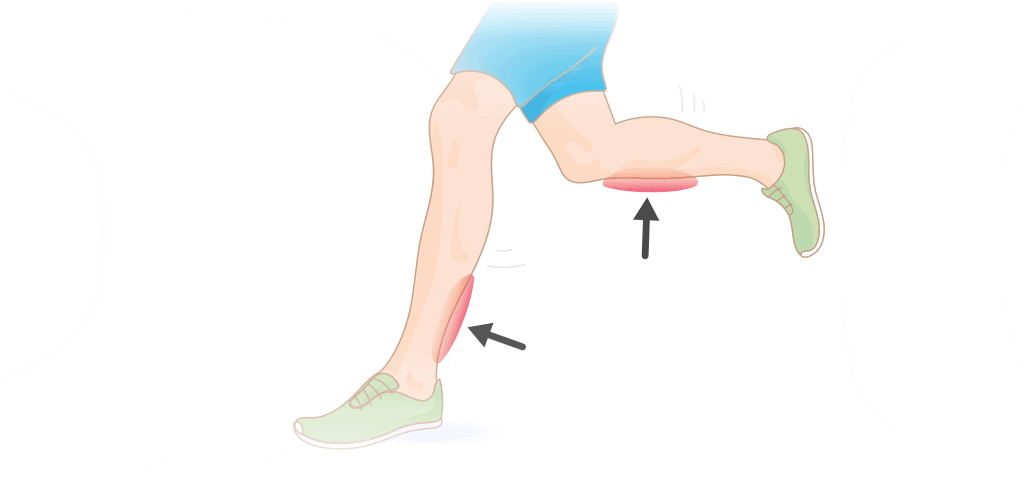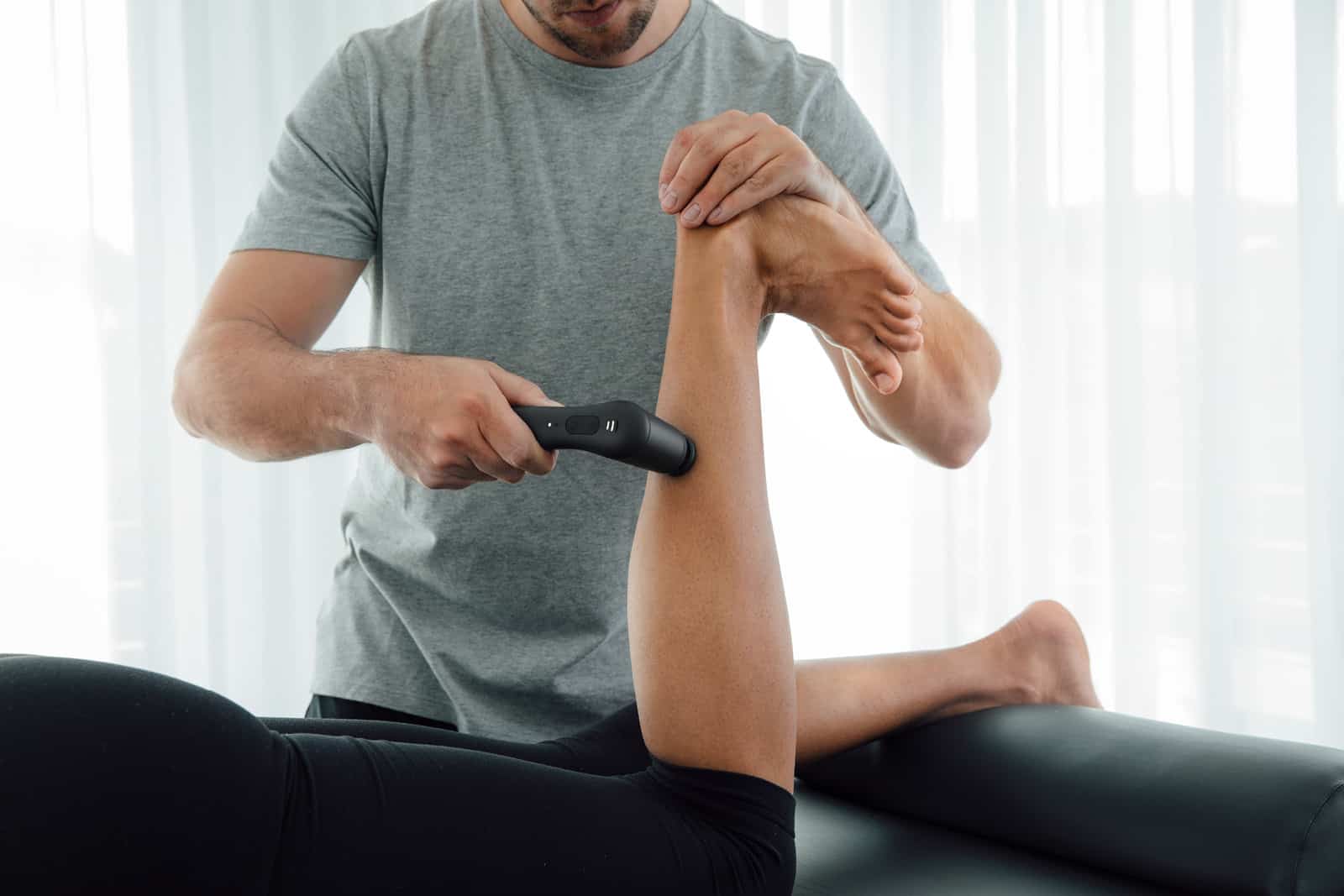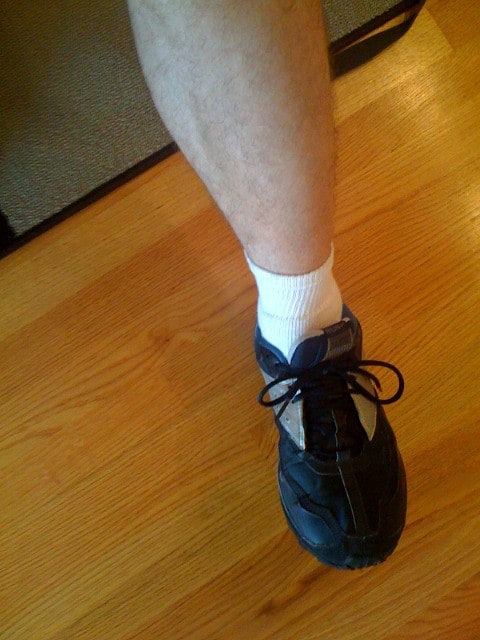Have you ever experienced a sharp, nagging pain in your shins after a run or a vigorous workout? Many individuals, particularly athletes and runners, have encountered this discomfort. This is known as shin splints.
In this article, we’ll delve into the world of shin splints. Join us as we explore what they are, what causes them, and how to prevent and treat this condition.
Defining Shin Splints
 (Image Credit: Wikimedia Commons)
(Image Credit: Wikimedia Commons)
Shin splints are medically known as “medial tibial stress syndrome.” They are characterised by discomfort along the front of the lower leg. This condition often occurs due to repetitive stress and strain around the shinbone. Essentially, it’s your body’s way of signalling that your lower legs are enduring too much stress.
Shin splints can affect anyone engaged in physical activity. They are particularly common among athletes and runners. Also, those who engage in high-impact sports involve frequent running and jumping.
Causes
Shin splints can be attributed to a variety of factors. The primary causes revolve around overuse, improper footwear, and poor biomechanics.
Overuse
One of the causes is overuse or sudden changes in physical activity intensity. For instance, an individual increases the frequency or intensity of their workouts quickly. The muscles and tissues surrounding the shinbone don’t have sufficient time to adapt. This leads to excessive stress and inflammation, resulting in shin splints.
Improper footwear
Wearing shoes that don’t offer good foot care support and cushioning can also contribute. The lack of shock absorption or arch support can increase the impact on the lower legs. Over time, this can lead to shin splints.
Poor biomechanics
Individuals with flawed biomechanics are more susceptible to shin splints. These include flat feet or overpronation (excessive inward rolling of the feet). Such issues can lead to an uneven distribution of stress along the shinbone. If overlooked, they can cause pain and inflammation.
Understanding these causes is crucial in preventing and effectively addressing shin splints.
Symptoms and Diagnosis
Shin splints often manifest with several distinct symptoms, including:
- Pain: A sharp, throbbing pain along the front of the shinbone during or after physical activity.
- Tenderness: The affected area may feel tender to the touch, especially along the inner edge of the shinbone.
- Swelling: Mild swelling and inflammation can occur around the lower leg.
Differentiating from similar conditions
It’s crucial to distinguish shin splints from other conditions with overlapping symptoms. Great examples are stress fractures or compartment syndrome. Stress fractures typically produce localised pain in a specific spot on the shinbone. And it can be confirmed through imaging like X-rays. Compartment syndrome may involve numbness or weakness and requires specialised pressure testing.
Seeking medical advice
If you experience persistent or severe shin pain, seeking medical advice is paramount. Ignoring these symptoms can exacerbate the problem and lead to more serious injuries.
A healthcare professional can provide an accurate diagnosis and rule out other conditions. As well as tailor a treatment plan to your needs, ensuring a safe and effective recovery.
Prevention
Preventing shin splints is crucial for maintaining an active lifestyle. Here are some tips and strategies to help you stay shin-splint-free:
- Gradual progression: Avoid sudden increases in workout intensity or duration. Gradually build up your activity level to give your lower legs time to adapt.
- Proper footwear: Invest in quality athletic shoes with good insoles with arc support. Replace them when they show signs of wear to maintain proper shock absorption.
- Surface selection: Choose exercise surfaces wisely. Opt for softer surfaces like grass or a running track instead of concrete or asphalt.
- Stretch and strengthen: Incorporate regular stretching and strengthening exercises for your calf muscles. Don’t forget your Achilles tendon and shin muscles. This can improve flexibility and reduce the risk of overuse injuries.
- Warm-up: Always start your workouts with a proper warm-up. Light jogging or brisk walking followed by dynamic stretches are recommended. Such a routine can prepare your muscles for the demands of exercise.
- Rest and recovery: Allow for sufficient rest between high-intensity workouts. Listen to your body, and don’t push through pain.
- Proper technique: Pay attention to your running or workout technique. Ensure your stride and form are correct to reduce unnecessary stress on your shins.
With these preventive measures, you can reduce the likelihood of developing shin splints. Most importantly, enjoy a more comfortable and injury-free exercise routine!
Treatment
 (Image Credit: Wikimedia Commons)
(Image Credit: Wikimedia Commons)
When it comes to addressing shin splints, a multi-faceted approach is key to recovery.
RICE method
Initially, following the Rest, Ice, Compression, and Elevation (RICE) method is crucial. Rest involves avoiding activities that worsen the pain. Apply ice in an ice bag to the affected area for 15-20 minutes every few hours to reduce inflammation. Compression, via a bandage or compression sleeve, can help minimise swelling. Elevating your leg when resting can aid in fluid drainage.
Consulting a healthcare professional
While self-care is essential, severe or persistent shin splints require professional evaluation. Healthcare providers can offer tailored treatment plans that may include the following:
- physical therapy
- anti-inflammatory medications
- orthotic devices like this Compex Anaform Neoprene Shin Splint Support
They can also rule out more serious conditions like stress fractures. Ignoring severe cases can lead to chronic pain or more significant injuries. Thus making early medical intervention crucial for a full recovery.
Recovery and Rehabilitation

Recovery from shin splints typically involves rest. Moreover, a gradual return to physical activity and addressing the underlying causes.
It’s vital to be patient during recovery. Rushing back into intense activity can worsen the condition. Adhering to prescribed treatment plans is essential for a successful recovery. These include rest and rehabilitation exercises,
In more severe cases, a healthcare professional may recommend physical therapy. This can help improve strength, flexibility, and biomechanics. Overall, it reduces the risk of future shin splints and promotes a faster recovery.
Round-up
In the world of physical activity, shin splints are a common hurdle. Armed with knowledge about their causes, prevention, and treatment, you can overcome it! Remember, patience and proper care are your allies. By taking steps to protect your shins, you can stay on the path to an active, pain-free lifestyle.
Explore the Physioroom for a range of support & braces, including walking braces. Up next: Using Braces and Taping Techniques for Injury Prevention



 (
( (
(